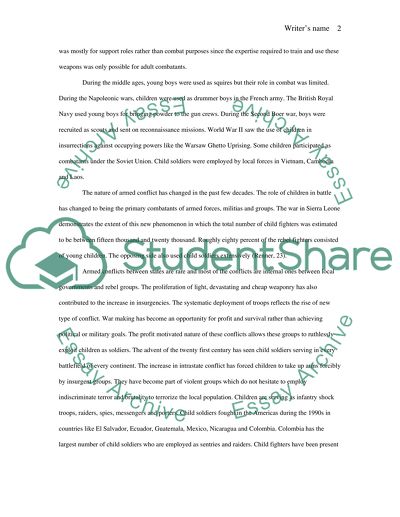Cite this document
(Theoretical Aspects of the Phenomenon of Child Soldiers and Scientific Term Paper, n.d.)
Theoretical Aspects of the Phenomenon of Child Soldiers and Scientific Term Paper. Retrieved from https://studentshare.org/history/1544691-theoretical-aspects-of-the-phenomenon-of-child-soldiers-and-scientific-issues-related-to-the-topic
Theoretical Aspects of the Phenomenon of Child Soldiers and Scientific Term Paper. Retrieved from https://studentshare.org/history/1544691-theoretical-aspects-of-the-phenomenon-of-child-soldiers-and-scientific-issues-related-to-the-topic
(Theoretical Aspects of the Phenomenon of Child Soldiers and Scientific Term Paper)
Theoretical Aspects of the Phenomenon of Child Soldiers and Scientific Term Paper. https://studentshare.org/history/1544691-theoretical-aspects-of-the-phenomenon-of-child-soldiers-and-scientific-issues-related-to-the-topic.
Theoretical Aspects of the Phenomenon of Child Soldiers and Scientific Term Paper. https://studentshare.org/history/1544691-theoretical-aspects-of-the-phenomenon-of-child-soldiers-and-scientific-issues-related-to-the-topic.
“Theoretical Aspects of the Phenomenon of Child Soldiers and Scientific Term Paper”. https://studentshare.org/history/1544691-theoretical-aspects-of-the-phenomenon-of-child-soldiers-and-scientific-issues-related-to-the-topic.


